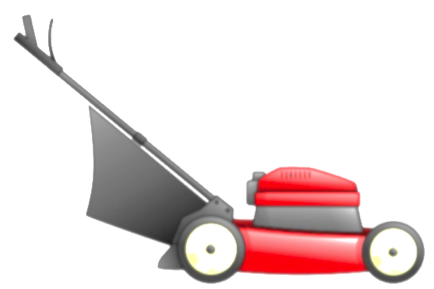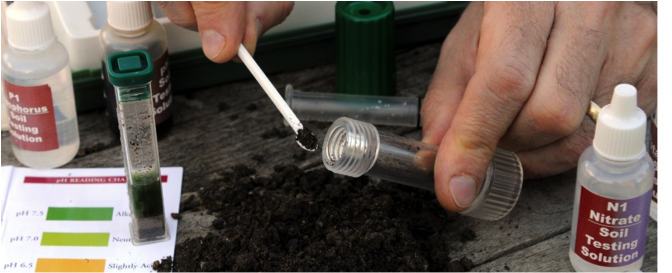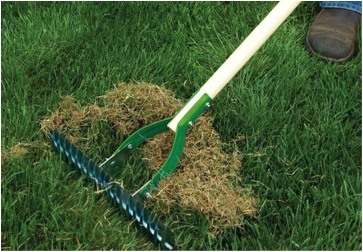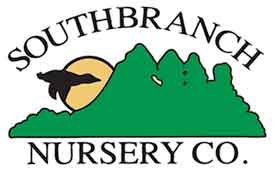While you may not be actively thinking about your lawn, having and keeping a well-manicured and lush green lawn starts while it is still dormant!
The fall winds carry the smell of autumn, bringing rain and weed seeds. These seeds will lie dormant in your yard all winter, waiting for soil temps to rise to 55˚ to germinate. Late winter is the best time to nip these seeds in the bud, so to speak. By applying a pre-emergent to your lawn before these weeds germinate, you can drastically reduce the amount of herbicide you will apply later in the year. Preventing those weeds from flowering and seeding in the first place reduces the amount of chemicals you apply to your lawn. An ounce of pre-emergent is worth a pound of herbicide! The best time to apply a pre-emergent in our area is between late February and mid-to-late March, before the soil temps begin to rise above 50˚.
- Hi-Yield Turf & Ornamental Weed & Grass Stopper containing Dimension ®
- Hi-Yield Weed and Feed 15-0-10
Though your warm season lawn is still dormant this time of year, it’s not too early to being prepping your lawn care equipment.
 This is a great time to sharpen your lawnmower blade, get a tune-up before a rush of non-working mowers floods the repair shops, replace or repair any tools that are beginning to show signs of wear (which can be hazardous), turn old clothing into shop rags, and stock up on fluids for your machines. Typical maintenance on a mower includes draining and changing the oil, replacing the air filter, and changing the spark plug. If you didn’t drain the old gasoline or use a gas stabilizer in the mower when it was stored, you may need to have the carburetor looked at. Beat the rush and start early! Nothing gets you down faster than pushing out the mower after your lawn wakes up and is ready for its first cut, only to find it won’t fire up for reasons unknown.
This is a great time to sharpen your lawnmower blade, get a tune-up before a rush of non-working mowers floods the repair shops, replace or repair any tools that are beginning to show signs of wear (which can be hazardous), turn old clothing into shop rags, and stock up on fluids for your machines. Typical maintenance on a mower includes draining and changing the oil, replacing the air filter, and changing the spark plug. If you didn’t drain the old gasoline or use a gas stabilizer in the mower when it was stored, you may need to have the carburetor looked at. Beat the rush and start early! Nothing gets you down faster than pushing out the mower after your lawn wakes up and is ready for its first cut, only to find it won’t fire up for reasons unknown.
When was the last time your lawn soil was tested?

Testing the soil every year gives you a great assessment of the current state of health for your lawn. Is your soil too acidic? Do you have patches of moss growing through your lawn? Have you noticed an uptick in weeds growing in your lawn? Many weeds prefer more acidic soil and will thrive in a malnourished lawn. Not only that, but soil outside of an optimal pH range of 5.9-7.2 can reduce the uptake of nutrients you apply to your lawn, reducing the effectiveness of your dollars spent keeping your lawn looking green and lush. Knowing where your soil stands is the first step in addressing your lawn needs throughout the year.
- Espoma Organic Lightning Lime to raise the soil pH
- Hi-Yield Soil Sulfur, Organic Compost, or Hi-Yield Ammonium Sulfate to lower the soil pH
What is dethatching and when should it be done?
 Dethatching refers to the process of removing the layer of organic debris that forms between the blades and roots. It will look like a matting of old, grayish-brown grass stems that have grown together. A small amount of thatch between .25-.75” is actually helpful to your lawn! It will provide insulation against soil temperature fluctuations, and helps conserve soil moisture. However, too much of a good thing is a bad thing in this case. Thatch that is more than 1” thick can repel water (including water that carries your fertilizer!) from penetrating the soil, reduce the air exchange with the soil, and prevent any grass seed you lay down from reaching the soil and germinating.
Dethatching refers to the process of removing the layer of organic debris that forms between the blades and roots. It will look like a matting of old, grayish-brown grass stems that have grown together. A small amount of thatch between .25-.75” is actually helpful to your lawn! It will provide insulation against soil temperature fluctuations, and helps conserve soil moisture. However, too much of a good thing is a bad thing in this case. Thatch that is more than 1” thick can repel water (including water that carries your fertilizer!) from penetrating the soil, reduce the air exchange with the soil, and prevent any grass seed you lay down from reaching the soil and germinating.
What causes thatch?
Overwatering, over fertilizing, and mowing too high can cause a buildup of thatch over time. Using a mulching mower can help, though you are likely to encounter a thick thatch over the years of natural grass cycles.
So what can be done about thatch? Why, dethatching of course! In late spring, use a hard rake to rake the grass, digging deep to penetrate the thatch and loosen it. Do this in early spring to prevent damage to new growth. If you have a large lawn, or would simply prefer to have a more mechanical approach, you can rent a dethatcher that will do most of the work for you, making just one pass over your lawn. After dethatching, remove the raked up thatch and throw it in the compost pile or discard it, and water your lawn if your weather has been dry.
Following these steps and preparing for spring and summer in the late winter will greatly reduce the amount of time you spend trying to address issues growing and maintaining your lawn throughout the year! Visit Southbranch Nursery Co. for any questions you have regarding your lawn, and let our knowledgeable staff guide you to becoming the envy of the neighborhood!



